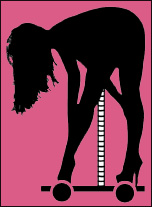Pages 1-89, 231-48
Hinton was a man who left North Carolina, the home of his ancestors, to study and write about the social cancer of plantation economics in Baltimore, which was a city of 250,000 with under 2,500 slaves. He regarded Baltimore’s success as being linked to its large scale reduction of its unfree population, compared to the situation at the nation’s founding which saw Baltimore with a larger slave population than in 1857 with less than 10% of the total population of 1857. He saw Baltimore’s progress as linked to its reduction of slave economics, even though Maryland itself, as he points out, was a grossly inefficient slave economy, which could not even feed its own livestock, depending on hay imports from Pennsylvania. Baltimore went from being 30-40% slave in 1776 to being less than 1% slave in 1857, and Hinton Helper believed that to be a causal relationship in regards to economic growth.
His entire book is based on the then new to the U.S.A. notion of statistics—he points out, being a German invention—which he uses to prove, state by state, city by city, commodity by commodity, that the slave economy of his time was not only grossly inefficient but also grossly inefficient compared to earlier versions of itself, the south having suffered under what he regarded as the scourge of forced African immigration an evil perpetrated by elite whites upon European-Americans, Africans and African-Americans. His writing sizzled and was not academically drab in the least:
“Yankee wives have written the most popular anti-slavery literature of the day. Against this I have nothing to say; it is all well enough for women to give the fictions of slavery; men should give the facts.”
He goes on to demonstrate that the 288,548 mostly African-American slaves in North Carolina were tools by which the elite maintained 80,083 mostly European-Americans in abject, illiteracy, ignorance and poverty:
“…for want of profitable employment at home, large numbers of our NATIVE [1] population find themselves necessitated to emigrate to the west…”
“Like all ոiggervilles in our disreputable part of the confederacy, the commercial emporium of South Carolina is sick and impoverished… Her annual importations are actually less now than they were a century ago, when South Carolina was the second commercial province on the continent, Virginia being first.”
He continues excoriating the land of his birth, in which a man cannot even be treated with southern made medicine, be laid out in southern-made clothes, buried with a southern-made spade or entombed under southern-quarried marble.
The lack of literature and science and even bibles are noted, with the southern elite described as a savagely exploitive vector for the siphoning off of the wealth of what Helper seems to characterize as a southern nation into Yankee hands. “Cardinal numbers” are then employed in the cause of “liberty” as table upon table is introduced to show that there is a glaring gap in all edible agricultural commodities: oats, wheat, corn, potatoes, rye, barely, buckwheat, beans, peas, clover, grass seed, flaxseed, vegetables, fruits between every one of the 16 free states and 15 slave states. The single free state of New York out-produced all of the 15 slave states in hay, which was the fuel for the engine of the day, the horse; and the southern army would ironically become heavily dependent on its cavalry arm in the coming war.
The South, he points out:
“Her men and her domestic animals, both dwarfed and shabby objects of commiseration [with many poor southerners starving to death as slaves were well-fed by comparison] under the blighting effects of slavery, are constantly feeding on the multifarious products of Northern Soil.”
Hay was even being transported into North Carolina, not just border states like Maryland. He goes on to prove that the value of the northern hay crop, a cash crop, exceeded the value of “…all the cotton, tobacco, rice, hay and hemp produced in the fifteen slave States.”
The numbers were ridiculously unbalanced on every measure, like comparing Cold War Era Soviet and American food production, with, in both case, land area being roughly similar. The Free States produced more hay value than all of the sundry products, including sugar, of the slave States by a measure of $3,533,275.
Every slave state is measured economically and is shown to be investing only in cash crops and negroes and driving its “white” population into poverty or emigration. Butter, cheese, sugar, cotton, everything is measured, with northern wool production dwarfing southern cotton production. Livestock value is also lopsided in the extreme, with the “industrial” economy husbanding animals much more effectively than the agrarian economy of the South, with animal husbandry having been supremely important to agrarian economies for 5,000 years.
Helper then spends his efforts documenting a precipitous, 100% per year decline in production of all things in all slave states between 1840-1850, with the primary corollaries being the exodus of European-American natives and an ever increasing population of African-American natives. It occurs to this reviewer, at this time, that if one measures the southern economy from 1607 through 1860, the confederacy had reached its natural cyclic nadir according to the 250 year polity growth span established by Glubb. It is noteworthy that internal slave insurrections were a prominent feature of the 1840s. However, the cause was probably much simpler, as Helper noted about the character of the slave imposed by his adapting to his circumstance:
“His mind is unenlightened and dark with ignorance. Among those who value him most, he is proverbially indolent, thievish, and neglectful of his master’s interests. It is common for even the advocates of slavery to declare that one freeman is worth half a dozen slaves.”
It is then shown that New York could buy over half of the slave states at auction!
The simple abolishing of slavery, Helper demonstrates, would increase acreage value from $5.34 to $28.07. He also points out that an “infant state” like Ohio has easily outstripped a 200 year old state like Virginia based on free labor principles. Also, the fact that large slave holders do not turn out for militia duty clearly rankles the patriotic author.
Helper quotes Thomas H. Benton, an anti-slavery advocate from 1804-56, claiming to have been convinced of the evils of slavery by reading Tucker’s edition of Blackstone Commentaries, who expressed the “free soil” strand of anti-slavery thought in an 1856 speech:
“I look to white people, and not to black ones; I look to the peace and reputation of the race to which I belong. I look to the peace on this land—the world’s last hope for a free government on this earth.”
The implication is that the spread of African Americans spread the tyranny of the elite and beggared the working man of European heritage.
Notes
-1. My emphasis
The other 12 summations of Helper’s work will appear at the patreon account linked below beginning in January 2018.
Support Plantation America Research
To support this project and view some graphics go to:
link › patreon.com/jameslafond











James,
Your "Plantation America" work could not come at a better time. In a Crackpot podcast, you and Lynn noted that hardly anyone lives in the neighborhoods of their childhoods because of skyrocketing home prices from immigrants as in the cases of both costs and because of section 8 housing and other attempts such as busing to disrupt neighborhoods of the working class. This has been going on for the entire life of this country and God and we are not pleased. For there to be reforms, we must start working together. Sadly, the collapse of Protestantism and Christianity have sapped all moral fiber from this nation. We are ready to be slaves.
One of the things which I think is waking people up is that America went from the first settled society where one could not live where his father lived, to one where you can't live where you did 5 years ago. The civic religion of familial disintegration [that only losers live with family] has morphed in my life time into a nomadic economic matrix with non-cyclic 5-year migratory seasons.